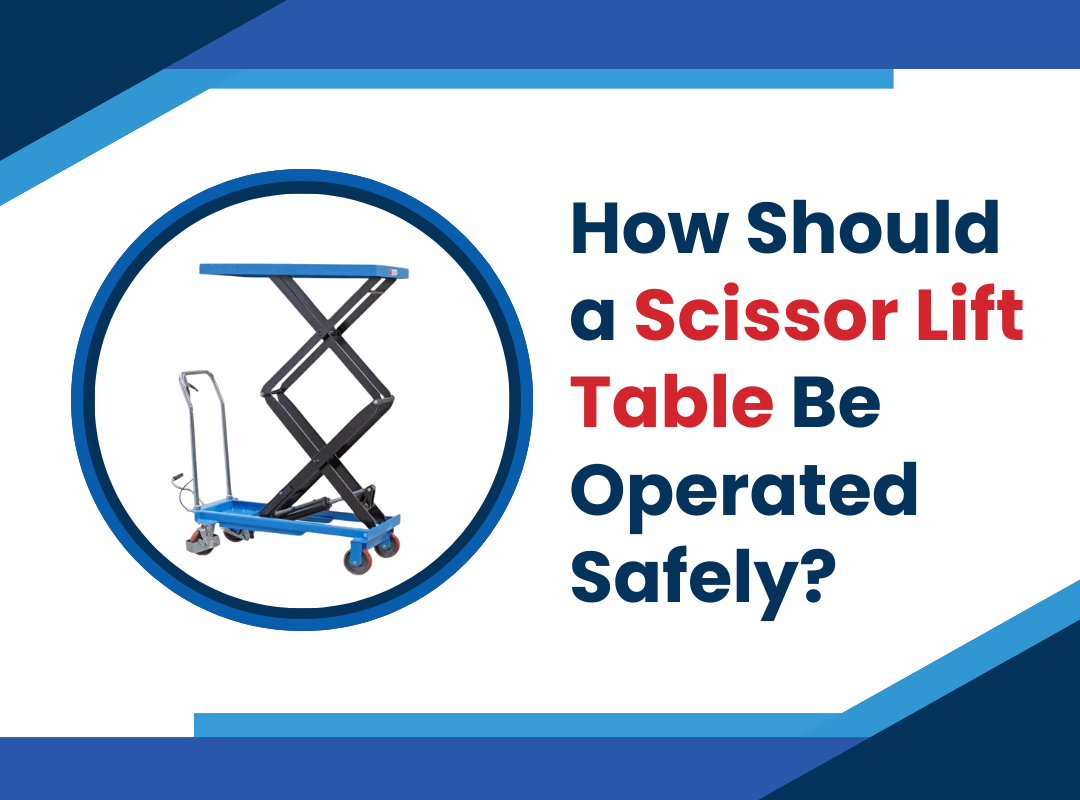The most popular commercial lifting devices for moving objects between floors, upward and downward in workshops, warehouses, three-dimensional garages, underground garages, and other locations are scissor lift tables. Given that the goods to be loaded may be massive in size, and heavy in weight. The secure operation of the scissor elevates desk is of quite significance.
Some specifications help to know deeply about Scissor Lift Table:
- Pre-use inspection
- Hydraulic Oil and Battery Fluid Inspection: Check the hydraulic oil first to see whether it is leaking or if the level is sufficient, and then refuel if necessary. Check routine-wise so if there is any problem with oil and battery so it can be repaired. Also ensure that each label is clear, legible, and properly located.
- Examining Components: Verify that none of the scissor lift tables’ components are defective, poorly placed, or missing, which includes the electrical components, nut, bolt, tires, wheels, cables, hydraulic hoses, wiring, joints, battery packs, Hydraulic Cylinders, hydraulic valve blocks, drive automobiles, wear-resistant sliders, gaskets, floor twine, limit transfer, platform entry, indicator light, extension platform, protection arm, scissor arm pin, fastener, brake parts, and so on.
- Inspection for Cracks and Tightening: If the entire scissor lift desk has cracks in structural components, dents, or damages then make sure that all structural components and other important components, all relevant fasteners, and pins are securely in place. Also, ensure that the oil pump tray and chassis battery tray are locked and closed and the battery is connected correctly.
Also Read – What Information Should You Have Before Selecting a Scissor Lift Table?
- Secure Operation
- Calculate the Weight of the Incoming Cargo: Make careful use of a four-wheel-chassis-equipped scissor lifting platform on the stable level ground wherever possible. The lift platform cannot roll over because only four of the chassis tires are firmly mounted on a horizontal plane.
- Parent Out the Burden of the Shipment Loaded Load: Calculating the weight of the cargo which will be loaded is necessary while operating a hydraulic scissor lift. Calculate an approximate weight for cargoes. If the weight is greater than the lifting platform’s maximum load, then stop using it because it can harm the scissor lifting platform or put the operator at risk.
- The Loads Should be Placed in the Middle of the Lifting Table: Heavy loads must be equally distributed in the middle of the platform when moving items with hydraulic scissor lifts. Avoid setting up heavy items on the lifting table’s one side to prevent accidents.
3. Troubleshooting
- Energy Outage: There are comparable emergency controls or buttons. The scissor-rise desk won’t move rather, it will gradually lower to the lowest position relying on its weight. A tool can also be used to grip the assistance spool and force it securely into place. Press the emergency to prevent button if any other problem is discovered. This button is specifically for an emergency stop which may be very stable and secure.
- Excessive Speed or Noise: If an unusual noise or momentarily anomalous speed happens while using the Hydraulic Scissor Lift then the lifting table is either loose or oil is lacking. Make repairs as quickly as you can. Temporarily abnormal speed could indicate a problem with the hydraulic system also check the hydraulic oil, filter, or valve.
Also Read – The Dos and Don’ts of Safely Operating a Scissor Lift Table
Conclusion:
Safety is the top priority in all lifting programs. Make sure before using the Scissor lift inspection and function are strictly consistent with the users’ guide. Using the safety guidelines at the same time as working the scissor lifting tables to ensure a clean, solid, and efficient lifting experience.


